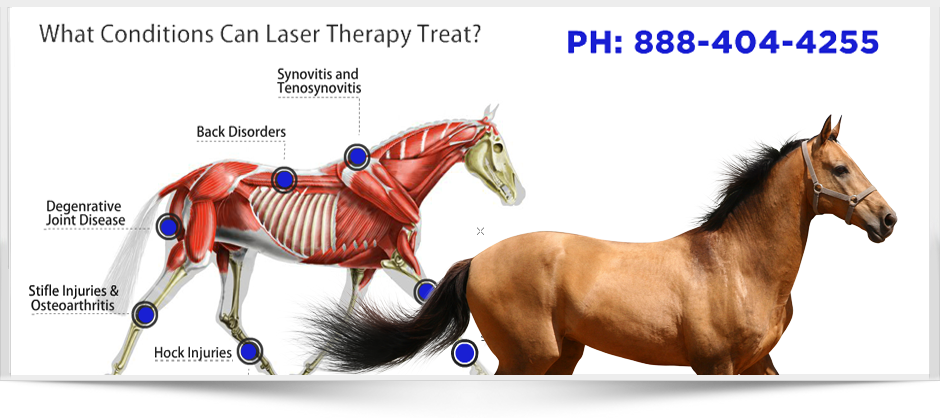Laser Therapy in Equine Treatment: A Modern Method to Improving Horse Health And Wellness
Laser therapy has actually arised as a pivotal strategy in equine therapy, making use of concentrated light energy to cultivate cellular repair service and expedite healing from a variety of disorders. By boosting mitochondrial task and enhancing ATP production, laser treatment not only enhances blood circulation yet likewise provides considerable discomfort alleviation.
Recognizing Laser Therapy
Laser treatment, a non-invasive therapy method, has acquired significant grip in equine medication because of its effectiveness in promoting recovery and discomfort relief. This advanced therapeutic strategy makes use of focused light power to pass through cells, cultivating cellular fixing and regrowth. The underlying device entails the stimulation of mobile mitochondria, leading to increased manufacturing of adenosine triphosphate (ATP), the power currency of cells. Enhanced ATP degrees expedite tissue repair work procedures and lower inflammation, making laser therapy especially effective for dealing with bone and joint injuries, wounds, and various other inflammatory problems in steeds.
There are a number of sorts of lasers utilized in equine treatment, each with certain wavelengths and power outputs customized to different therapeutic requirements. Low-level laser treatment (LLLT), also recognized as cold laser treatment, employs lower power levels to boost cell function without triggering thermal damage. High-intensity laser treatment (HANDLE), on the other hand, utilizes higher power levels to accomplish much deeper tissue infiltration and even more significant healing results.
Veterinarians use numerous laser devices and methods depending on the condition being dealt with and the wanted depth of tissue penetration. Appropriate training and know-how are important for making sure the risk-free and reliable application of laser treatment, consequently optimizing its therapeutic potential while decreasing dangers.
Benefits for Equine Wellness
With a strong understanding of just how laser treatment functions, it is necessary to explore its numerous advantages for equine health and wellness. One of the key advantages is its capability to speed up cells repair service and cell growth. By promoting mobile function, laser therapy promotes faster wound recovery and help in the regeneration of damaged tissues. This can be especially valuable in decreasing healing times for equines experiencing injuries.
Furthermore, laser treatment has actually been revealed to improve circulation, consequently improving blood circulation to impacted areas. Boosted circulation guarantees that vital nutrients and oxygen are provided more effectively, helping with the healing procedure. Additionally, laser treatment's anti-inflammatory impacts assist in minimizing swelling and discomfort, which is essential for the general well-being of the horse.
Pain administration is an additional considerable advantage. By launching endorphins and blocking discomfort signals, laser therapy provides efficient, non-invasive relief from both acute and chronic discomfort. This can add to boosted flexibility and lifestyle for the pet.
Last but not least, laser treatment is a non-invasive therapy choice, decreasing the danger of problems related to more invasive treatments. Its flexibility and efficacy make it a vital device in contemporary equine vet medication.
Common Conditions Dealt With

One more widespread problem treated with laser therapy is joint inflammation. Furthermore, laser treatment is employed in the administration of wounds.
Equine respiratory conditions, such as frequent airway blockage (RAO), likewise respond favorably to laser therapy. Laser treatment is beneficial in dealing with hoof problems, consisting of laminitis and abscesses.
Procedure and Security
Executing laser treatment in equine therapy involves a precise procedure to ensure both efficiency and safety. Equine Therapy. The process begins with a complete vet assessment to determine the viability of laser therapy for the equine's certain condition. As soon as considered ideal, the therapy area is prepared by cleaning and, if essential, clipping the hair to boost laser infiltration
The expert must select the proper sort of laser, normally a low-level laser (LLLT) or a high-power laser (HPL), relying on the problem being treated. The laser device is then calibrated to the ideal wavelength, power, and duration setups. During the application, the expert relocates the laser over the targeted area in an organized fashion, making sure consistent and even direct exposure.
Safety and security methods are strictly complied with, consisting of making use of protective glasses for both the professional and the horse. Additionally, it is critical to monitor the steed for any kind of indicators of pain or damaging reactions throughout the procedure. Post-treatment, the horse is frequently provided a period of rest to enable the restorative impacts to show up.

Future of Horse Laser Treatment
As developments in veterinary medicine remain to unfold, the future of equine laser therapy holds substantial promise. Emerging technologies and much deeper scientific insights review are established to fine-tune and broaden the applications of laser treatment for horses. Among one of the most expected growths is the combination of innovative click for more info imaging methods that enable much more precise targeting of affected cells, thus improving restorative results. Additionally, the development of mobile and easy to use laser devices is likely to make this treatment much more obtainable to a broader range of professionals and equine owners.
Furthermore, recurring research into the molecular and mobile mechanisms of laser therapy will likely produce enhanced procedures customized to details problems, enhancing efficiency and lowering therapy times. Customized therapy strategies based upon hereditary and biochemical pens can become a truth, making certain that each steed receives the most suitable and efficient treatment.
Moreover, regulative developments and standardization of methods will improve the integrity and dependability of laser treatment in equine technique. Equine Therapy. As these technologies continue to arise, equine laser therapy is positioned to end up being a crucial element of veterinary treatment, offering boosted healing and improved high quality of life for equines around the world
Final Thought

Comments on “Equine Therapy for Kid: Emotional and Behavior Support Explained”